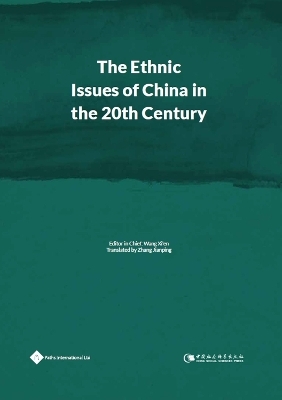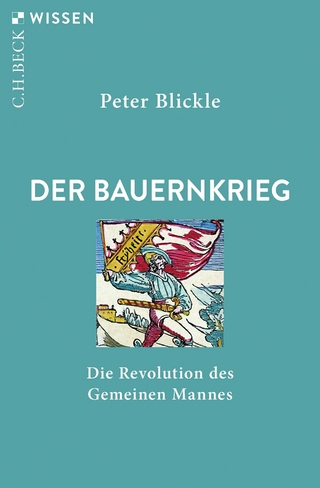
The Ethnic Issues of China in the 20th Century
Paths Publishing Group (Verlag)
978-1-84464-478-0 (ISBN)
The book is concerned with the Ethnic issues of China in the 20th century in general. It includes the conflicts between the foreign aggression and Democratic Revolution, the ethnic issues, the ethnic policies, the development in Xinjiang, Mongols, Tibet and other regions in China during the 20th century.
Since China is a country with 56 nationalities, it adopts its own ethnic policy with Chinese character. As the rising of China now in the world with 1.3 billion population and multiple nationalities, the western world may doubt why China can maintain the harmony and high speed economic development in different regions, such as Xinjiang, Inner Mongolia, Tibet, etc. What are the historical causes led to such a multiple-nationality Country?
There are unique aspects to this book. One is the detailed analysis on the historical background and reasons for such a multiple-nationality Country; the other is the vivid description of the ethnic policy in China in different minority nations and the interpretation of the issues and solutions for some special regions which the ethnic researchers studied.
This book is a comprehensive study on the ethnic issues in China in three dimensions, from the chronological aspect, the policy making aspect, and the inner and international impact on Chinese ethnic issues. If the reader wants to know China, a multi-nationality Country’s development, these factors cannot be ignored.
Prof Wang works in the Institute of Ethnology and Anthropology, CASS. His research field includes the history of ethnics in China and the Contemporary ethnic issues, the ethnical theories, etc. His representative monograph and essays are: The Process of Nationalities and Nations (1998), An Analysis of Contemporary Chinese Ethnic Issues (2002), The Process of Nationalization in the Global Background (2009), Issues and Harmony: Seeking the Solution of the Chinese Ethnic Problems (2012), Rethink about the Harmonious National Relations (2010). Zhang Jianping, works as an English professor in Jiangxi University of Science and Technology, once as visiting scholar and professor to take training and teaching in Cambridge University and Canterbury University, University of Alabama.
Chapter I The Ethnic Issues of China at the Turn from the 19th to the 20th century
1. Ethnic crisis of China Aggravated by Foreign Powers’ Invasions
2. The Manchu-Han Conflict during the Xinhai Revolution
3. The Late Qing Reforms in the Frontier Regions and Their Effects
Chapter II Foreign Powers’ Aggression against China and the Frontier Crisis around the Xinhai Revolution
1. Russia’s Aggression against Mongolia around the Xinhai Revolution
1.1 Economic Aggressions
1.2 Incitement of Ethnic Conflict
1.3 Assist Outer Mongolia’s Independence
1.4 Military Aggressions against Uliastai and Khovd
1.5 Occupation of Tannu Uriankhai
2. The ""Independence"" and ""Autonomy"" of Hulun Buir
3. Russia's Invasion of Xinjiang
3.1 Aggression of Xinjiang on the eve of the Xinhai Revolution
3.2 Invasion of the Chinese Northwest Frontier Regions
4. Japan's Penetrations in Inner Mongolia
4.1. “The Independence Movement of Manchuria and Mongolia”
4.2 Attempt of Dividing Inner Mongolia
5. British’s Conspiracy to Split Tibet
5.1 Military Invasion and Economic Plundering in Tibet
5.2 Attempt of Splitting Tibet
5.3 The Simla Conference and the McMahon Line
5.4 Britain and Russia’s Competition for the Dominance of Tibet
Chapter III The Democratic Revolution and Nationalism of China
1. Relation between the Chinese Democratic Revolution and Nationalism
2. Interpretations on Nationalism by the Major Political Affiliations of Modern China
3. The Role of Nationalism in the Chinese Democratic Revolution
4. The State Concept for the Chinese Nationalism
Chapter IV The Ethnic Policies and Institutions of the Republic of China
1. Ethnic Policies of the Nanjing Provisional Government
1.1 Promotion of Ethnic Unity and State Unification
1.2 Affirmation of the Principle of Ethnic Equality
1.3 Development of Education and Economic Endeavors in the Frontier Regions
2. The Beiyang Government’s Ethnic Affairs Administration and Ethnic Policies
2.1 Establishment of Ethnic Affairs Administration
2.2 Proposition of “Union of Five Races” and State Unity
2.3 Inheritance and Implementation of Ethnic Policies
3. Ethnic Policies and Institutions of the Nationalist Government between 1928 and 1937
3.1 Formation of a Decentralized Management System for Ethnic Affairs
3.2 Ethnic Policies in the Frontier Regions
4. Ethnic Policies of the Nationalist Government during the Second Sino-Japanese War (1937-1945)
4.1 The War-time Ethnic Policies of the KMT
4.2 Measures in Ethnic Administration during the Second Sino-Japanese War
4.3 Political Dominance over the Frontier Regions
4.4 The Economic and Cultural Development of the Frontier Regions
4.5 Administrative Blueprint of Frontier Regions after the Second Sino-Japanese War
5. The Nationalist Government’s Ethnic Policies from 1945 to 1949
5.1 Promotion of its Ethnic Policies
5.2 Restoration of the KMT’s Governance in Mongolia, Tibet and Xinjiang
Chapter V Regional Ethnic Autonomy and the Evolution of the Ethnic Affairs Administrative System since 1949
1. Federalism and Regional Ethnic Autonomy
1.1 “National Self-determination"" and ""Federalism""
1.2 Ethnic Minorities’ Autonomy under the Principle of National Self-determination
1.3 Inauguration of Regional Ethnic Autonomy System
2. Ethnic Affairs Administration during the Democratic Revolution
3. Ethnic Affairs Management between 1949 and 1978
3.1. Establishment of Ethnic Affairs Administration
3.2 Implementation of Regional Ethnic Autonomy in the Compact Communities of Ethnic Minorities
3.3 Ethnic Affairs Administration for the Dispersed and Intermingled Communities of Minority Nationalities
3.4 Tortuous Course of Regional Ethnic Autonomy and Ethnic Affairs Mechanism
4. Restoration and Development of the Ethnic Affairs System after 1978
4.1 Restoration and Improvement of Ethnic Affairs Administration
4.2 Legislation for Regional Ethnic Autonomy
4.3 Restoration of Ethnic Affairs Mechanism for the Minority Nationalities in the Dispersed and Intermingled Communities
Chapter VI The Development of Chinese Minority Nationalities
1. Chinese Minority Nationalities during the First Half of the 20th Century
2. Development of the Ethnic Minority Regions during the Republic of China (1912-1949)
3. Rapid Development between 1949 and 1957
4. Economic Growth of the Ethnic Minority Regions between 1958 and 1977
5. Rapid Development of the Ethnic Minority Regions after 1978
Chapter VII The Division and Evolution of the Mongols in the 20th Century
1. The Integration and Division of the Ancient Mongols
1.1 Merging and Splitting of the Mongols during the Mongol Empire
1.2 The Qing Empire’s Governance Strategy of the Mongols: Divide and Rule
1.3 The Tsarist Russia’s Penetrations in North Mongolian
2. Causes for Outer Mongolia's Independence
2.1 The Qing Empire’s Outdated Policy in Outer Mongolian
2.2 Distinctive Lifestyles for Inner Mongols and Outer Mongols
2.3 Outer Mongolia's “Autonomy” and its subsequent Withdrawal
2.4 The Soviet Revolution of Russia and Outer Mongolia’s Independence
3. Inner Mongolia’s Autonomous Movement and Implementation of Regional Ethnic Autonomy
3.1 Japan's Penetration in Inner Mongolia and the “Autonomous Movement” of Eastern Mongolia
3.2 “High Degree Autonomy” Campaign in West Inner Mongolia
3.3 Practice of Regional Ethnic Autonomy in Inner Mongolia
4. Inner and Outer Mongolian in the Second Half of the 20th Century
4.1 Inner Mongols of China
4.2 Outer Mongols in Mongolia Republic
4.3 “Unity of the Three Mongolias” and ""Pan-Mongolism""
Chapter VIII The “Issue of Tibet” in the 20th Century
1. Relation between Tibet and the Chinese Central Government in Ancient Times
1.1 Tibet in the Yuan Dynasty (1271-1368)
1.2 The Governance of Tibet by the Ming Empire (1368-1644)
1.3 The Governance of Tibet in the Early Qing Dynasty
2. Foreign Aggression in Tibet between 1840 and 1949
2.1 The Penetrations of British India against Tibet
2. 2 The Interference of the United States in Tibetan Affairs
3. The Governance of Tibet by the Republic of China (1912-1949)
3.1 Ruling of Tibet by the Nanjing Provisional Government and the Beiyang Government
3.2 Ties between Tibet Local Government and the Nationalist Government
4. The Peaceful Liberation and Social Reform of Tibet
4.1 Tibet’s Peaceful Liberation
4.2 Tibet's Social Reform and Regional Ethnic Autonomy
4.3 Economic and Social Progress
5. External Interference in Tibetan Affairs in the Second Half of the 20th Century
Chapter IX The Separatism and Social Stability in Xinjiang
1. The Origin of Pan-Turkism and Pan-Islamism and their penetrations in Xinjiang
2. The First “East Turkestan Republic”: the Initial Political Prtice of the “Eastern Turkistan” Separatists
3. The “Three Districts Revolution”
4. Nationality Restoration for the Russian Immigrants in China and the Defection of Xinjiang Residents
5. Major Incidents Produced by the “East Turkistan” after 1949
6. Terrorism Activities by the “East Turkistan” Militants in the 1980s and 1990s
7. The Operations against “East Turkistan” after 1996
| Erscheinungsdatum | 01.04.2017 |
|---|---|
| Mitarbeit |
Chef-Herausgeber: Wang Xi'en |
| Übersetzer | Zhang Jianping |
| Sprache | englisch |
| Gewicht | 333 g |
| Themenwelt | Geschichte ► Teilgebiete der Geschichte ► Kulturgeschichte |
| Geisteswissenschaften ► Religion / Theologie ► Weitere Religionen | |
| Sozialwissenschaften ► Ethnologie | |
| Sozialwissenschaften ► Soziologie | |
| ISBN-10 | 1-84464-478-2 / 1844644782 |
| ISBN-13 | 978-1-84464-478-0 / 9781844644780 |
| Zustand | Neuware |
| Haben Sie eine Frage zum Produkt? |
aus dem Bereich


